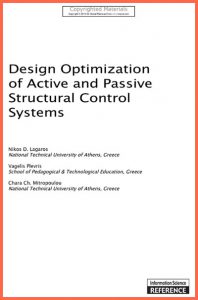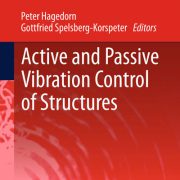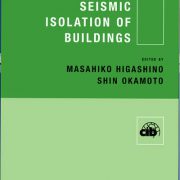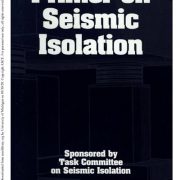Design Optimization of Active and Passive Structural Control Systems
A typical engineering task during the development of any system is, among others, to improve its per-formance in terms of cost and response. Improvements can be achieved either by simply using design rules based on the experience or in an automated way by using optimization methods that lead to opti-mum designs.
Structural control is an expanding field
Structural control is an expanding field in the family of control systems, also known as earthquake protective systems, including passive, active, and hybrid systems. Applications to buildings, bridges, and power plants have been made in many seismically active countries (primarily in Italy, Japan, New Zealand, and the United States). Structural control provides an alternative to conventional structural design methods. In many applications, elastic performance during large earthquake events is economi-cally feasible, and the methodology permits performance-based design criteria. now required in many modern seismic design codes, to be satisfied more readily than with conventional methods.
Applica-tions
Applica-tions to the retrofit of existing structures have been particularly attractive, especially to the upgrading of historical buildings. Passive control systems include tuned mass dampers, base isolation systems, mechanical energy dissipation systems, and others. Major developments in theory, design, and installation procedures of these systems have permitted applications to buildings, bridges, and power plants. After the development of passive control systems, the next step was to control the action of these devices in an optimal manner by an external energy source and the resulting system is known as an active control device system. In recent years significant progress has been made in the analytical study of active control systems for civil engineering structures. There are however limitations to the use of the passive and active control systems, and therefore, further study is required. These limitations include the uncertainty of the response, the non-optimal behavior of passive systems for both small and large earthquakes and others.
The structural control fields described
The structural control fields described above define “hot” topics of Earthquake Engineering involving the use of advanced optimization tools.The basic idea of this book is to include all the aforementioned research topics into a volume tak-ing advantage of the connecting link between them, which is optimization. In this direction the book consists of 14 chapters in total, dealing with the topic of design optimization of active and passive structural control systems. The objective of chapters one to four is to evaluate different methodologies for the optimal placement and innovative design of passive energy dissipation systems used to reduce. vibrations of civil engineering structures subject to earthquakes. Furthermore, the recent advances in damper placement methodologies based on optimization theory are reviewed. In addition the problems of the optimal location of viscoelastic dampers and determination of the optimal values of parameters of dampers are also considered.
Detials:
| عنوان |
Design Optimization of Active and Passive Structural Control Systems |
| نویسنده | Nikos Lagaros, Vagelis Plevris, Chara Ch. Mitropoulou |
| زبان | English |
| Size | 16 MB |
| Download Method | مستقیم |
| Download Links | Download Design Optimization of Active and Passive Structural Control Systems |




 Response Control and Seismic Isolation of Buildings
Response Control and Seismic Isolation of Buildings
 تهران، شهرک غرب، بلوار خوردین، بلوار شریفی، توحید 4، پلاک 6، واحد 111
تهران، شهرک غرب، بلوار خوردین، بلوار شریفی، توحید 4، پلاک 6، واحد 111

